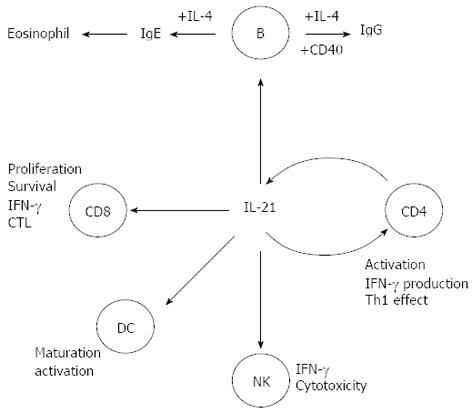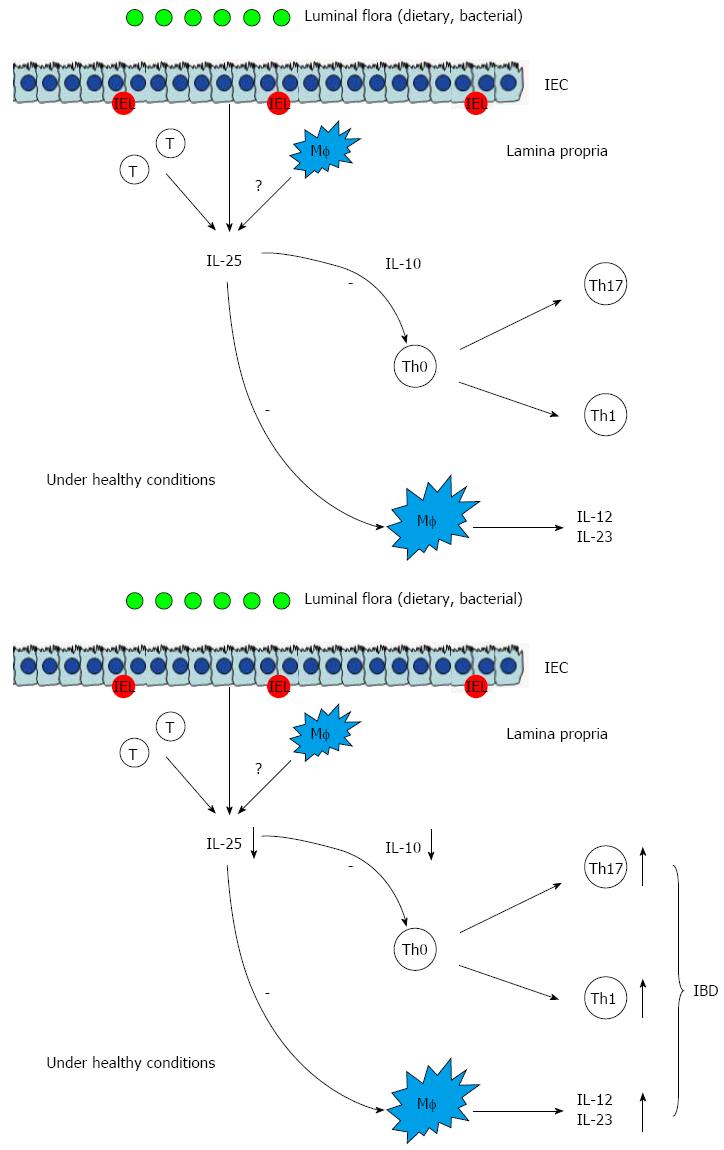Copyright
©2014 Baishideng Publishing Group Co.
World J Gastroenterol. Mar 28, 2014; 20(12): 3255-3264
Published online Mar 28, 2014. doi: 10.3748/wjg.v20.i12.3255
Published online Mar 28, 2014. doi: 10.3748/wjg.v20.i12.3255
Figure 1 Pathogenesis of inflammatory bowel disease.
DC: Dendritic cell; NK: Natural killer; Th: T helper; Treg: T regulator cell; CTL: Cytotoxic T lymphocyte; Mf: Macrophages.
Figure 2 Pleiotropic role of interleukin-21 in immune responses.
IFN: Interferon; IL: Interleukin; CD: Crohn’s disease; DC: Dendritic cell; NK: Natural killer; CTL: Cytotoxic T lymphocyte.
Figure 3 Overexpression of interleukin-23 in inflamed mucosa of patients with inflammatory bowel disease weakens the intestinal defensive barrier and disturbs the immune regulation in intestinal mucosa.
IEL: Intestinal epithelial lymphocyte; IL: Interleukin; Th: T helper; Treg: T regulator cell; DC: Dendritic cell.
Figure 4 Inhibitory role of interleukin-25 in intestinal mucosa.
IEL: Intestinal epithelial lymphocyte; IL: Interleukin; Th: T helper; Treg: T regulator cell; CTL: Cytotoxic T lymphocyte; Mf: Macrophages; IEC: Intestinal epithelial cells; IBD: Inflammatory bowel disease.
- Citation: Xu XR, Liu CQ, Feng BS, Liu ZJ. Dysregulation of mucosal immune response in pathogenesis of inflammatory bowel disease. World J Gastroenterol 2014; 20(12): 3255-3264
- URL: https://www.wjgnet.com/1007-9327/full/v20/i12/3255.htm
- DOI: https://dx.doi.org/10.3748/wjg.v20.i12.3255












